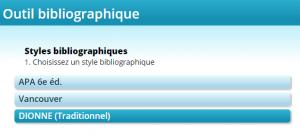Automated Table of Contents
Pagination
Paginating with Word
Title page
Respect copyright?
Preventing plagiarism
Cégep Policy
Excerpt from the Institutional Policy on the Evaluation of Student Achievement (IPESA) of the Cégep de la Gaspésie et des Îles, December 2024, pages 14 and 15:
2.12 FRAUD AND PLAGIARISM
The Cégep places great importance on preventing plagiarism and respecting intellectual integrity. For this reason:
2.12.1 A student who plagiarises will receive a mark of 0 for the assignment. Plagiarism is defined as “copying all or part of the content of another work into one’s own work without citing the source1“.
2.12.2 Self-plagiarism is also a form of plagiarism. It is the act of presenting the same text or production several times, simultaneously or successively, without having first received the approval of the teacher receiving the text or production2 .
2.12.3 Any fraud, attempted fraud or involvement in fraud or cheating will result in a mark of 0 for the test or assignment concerned.
2.12.4. The use of artificial intelligence (AI) assistance as part of an assessment must be authorised by the teacher; otherwise, it constitutes fraud.
2 plagiat.pdf (uqar.ca)
3 Plagiat et fraude – Enseigner à l’UQTR – UQTR (uquebec.ca)
Learn to paraphrase
To find information to do research, you have to consult several types of documents written by authors. This information belongs to them and, to use it, you have to indicate it in the work. This is a basic rule in any research work since you must always respect intellectual property and copyright law. You have to indicate where all the information comes from, regardless of the type of medium on which it was found (Internet, book, magazine, images, video, etc.). Not respecting this rule constitutes a form of plagiarism. To avoid it, you have to indicate the sources, that is, specify where the information used when writing a work comes from. In addition to giving credit to those who wrote this information, this also allows the reader to consult the source that was used to do the work. This also adds value to the work since it shows that you have researched the subject.
The source of all information used to complete an assignment should therefore be identified. There are different methods for doing this. The APA (American Psychological Association) method is the one recommended in Cégep. However, some teachers may ask to use another method such as the footnote method, also called the traditional method.
Video clip: citing your sources to avoid plagiarism (french only)
Indicate your sources with the APA (American Psychological Association) method
Summary (french only) table to make quotations and paraphrases.
Indicate your sources with the traditional method
Some teachers may ask to indicate the source of paraphrases and quotations using the traditional method. This video (french only) shows how. Be sure to left-click on Dionne (Traditional) to access the correct information.
Integrating citations into a work
Quotations are excerpts taken directly from the documents consulted during the development of the work, regardless of their medium (encyclopedia, book, periodical or newspaper article, on the Internet, etc.). Although it is preferable, to preserve the unity of the text, to summarize the thoughts of an author—this is then a paraphrase—it may sometimes be necessary to quote them verbatim. A quotation is therefore different from a paraphrase (see section 10 on this subject) since it reproduces the author’s words verbatim.
Any excerpt must correspond exactly to the original in terms of words, spelling, punctuation, and even formatting (italics, underlining, etc.), even if the excerpt contains errors (see the end of section 9.3.3 for details on this subject).
The source of the quotation must always be indicated, as well as the page number from which it comes. For documents without pages, such as websites, it is recommended to indicate the paragraph number (for example, paragraph 4).
There are different methods for indicating the source of quotes. Two are presented in this document: the author-date method and the footnote method (also called traditional). To know which one to use, you should ask your teacher for advice. Note that the same method must be used for the entire work.

